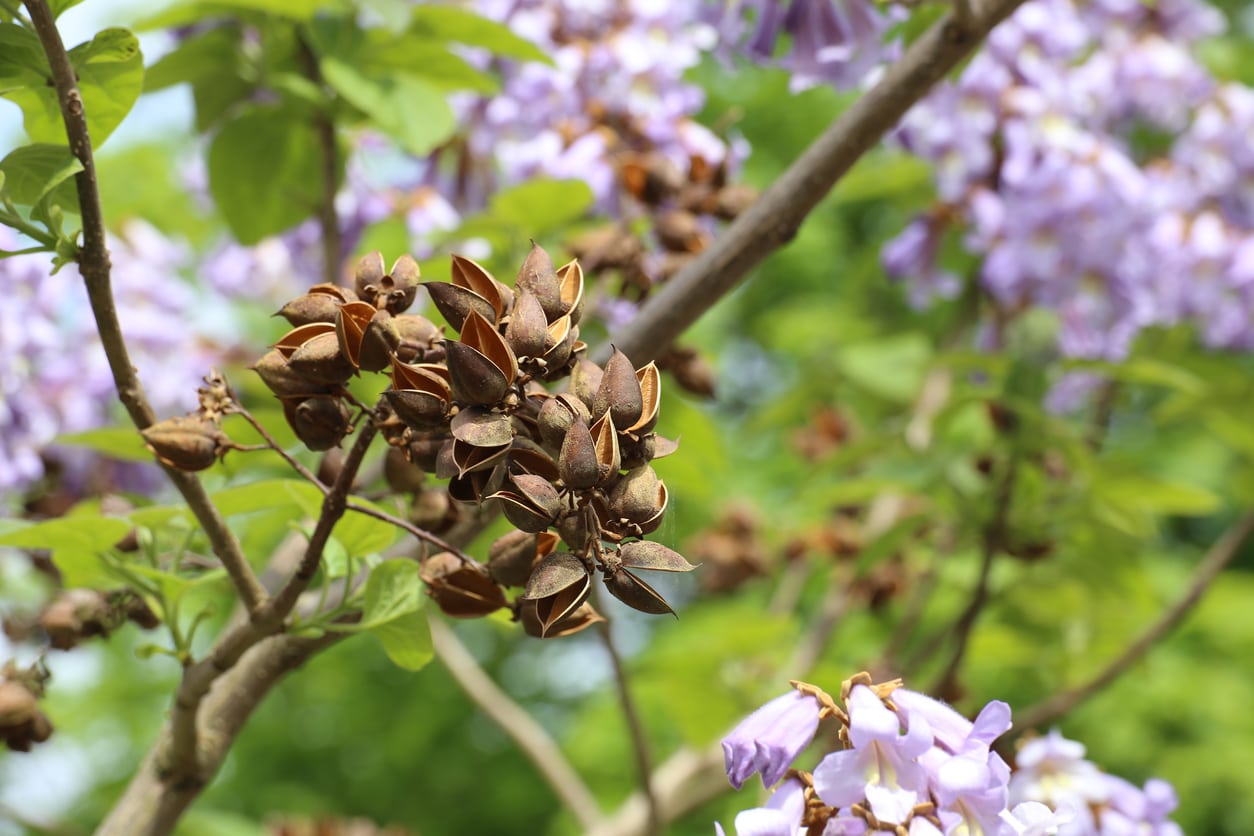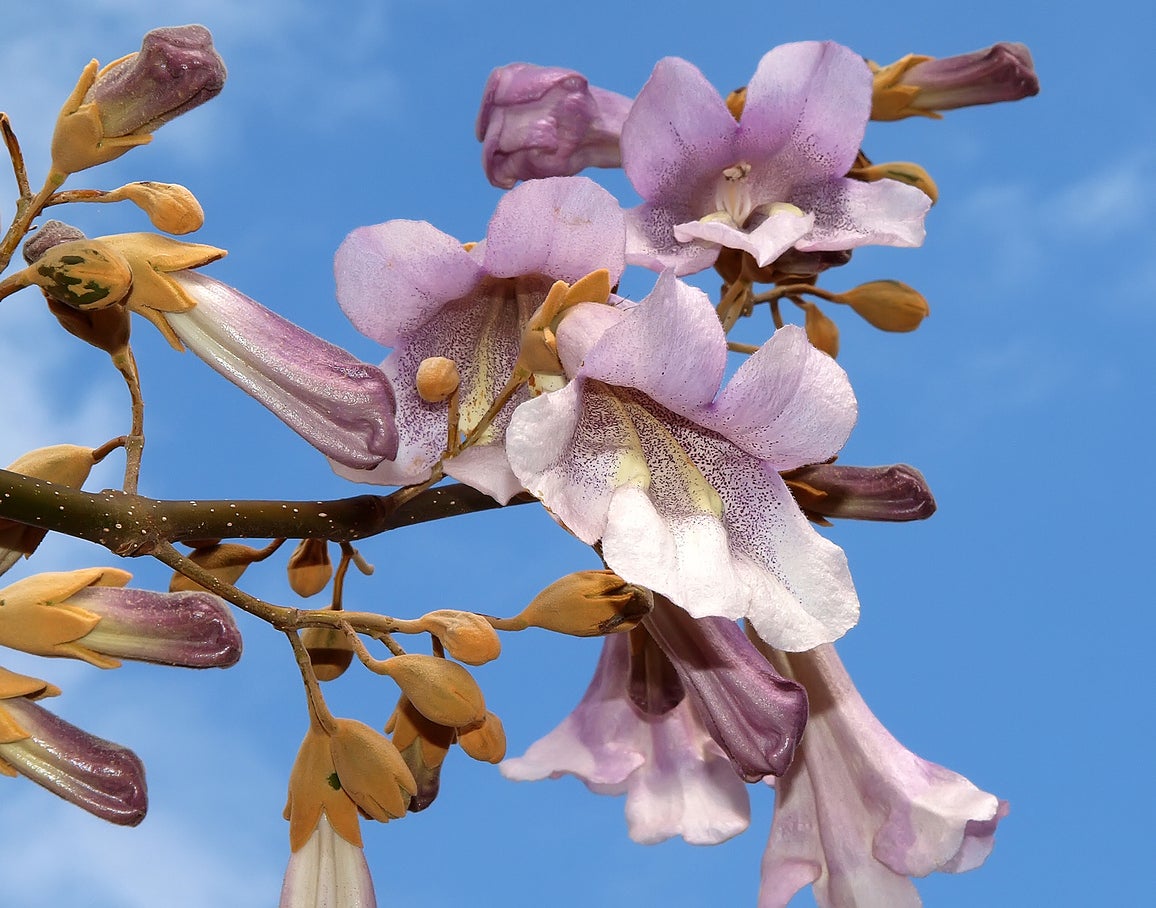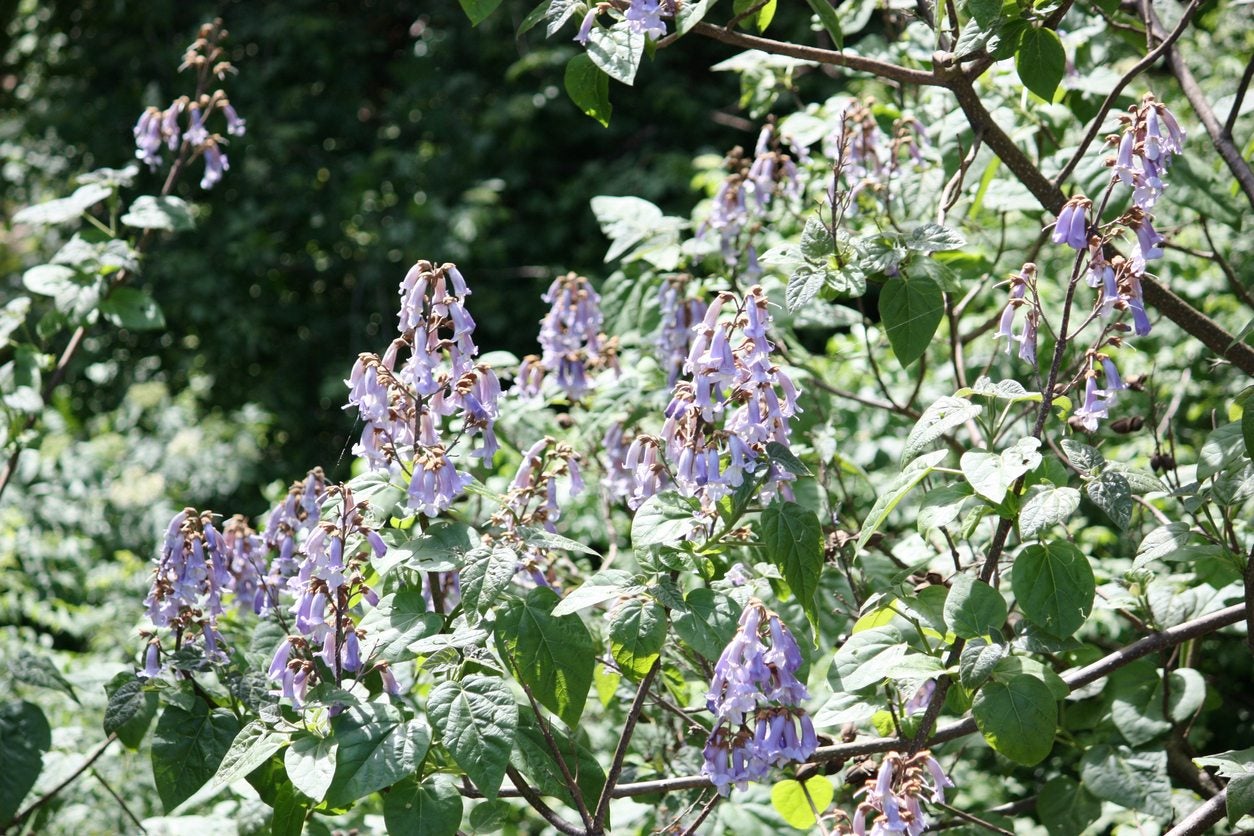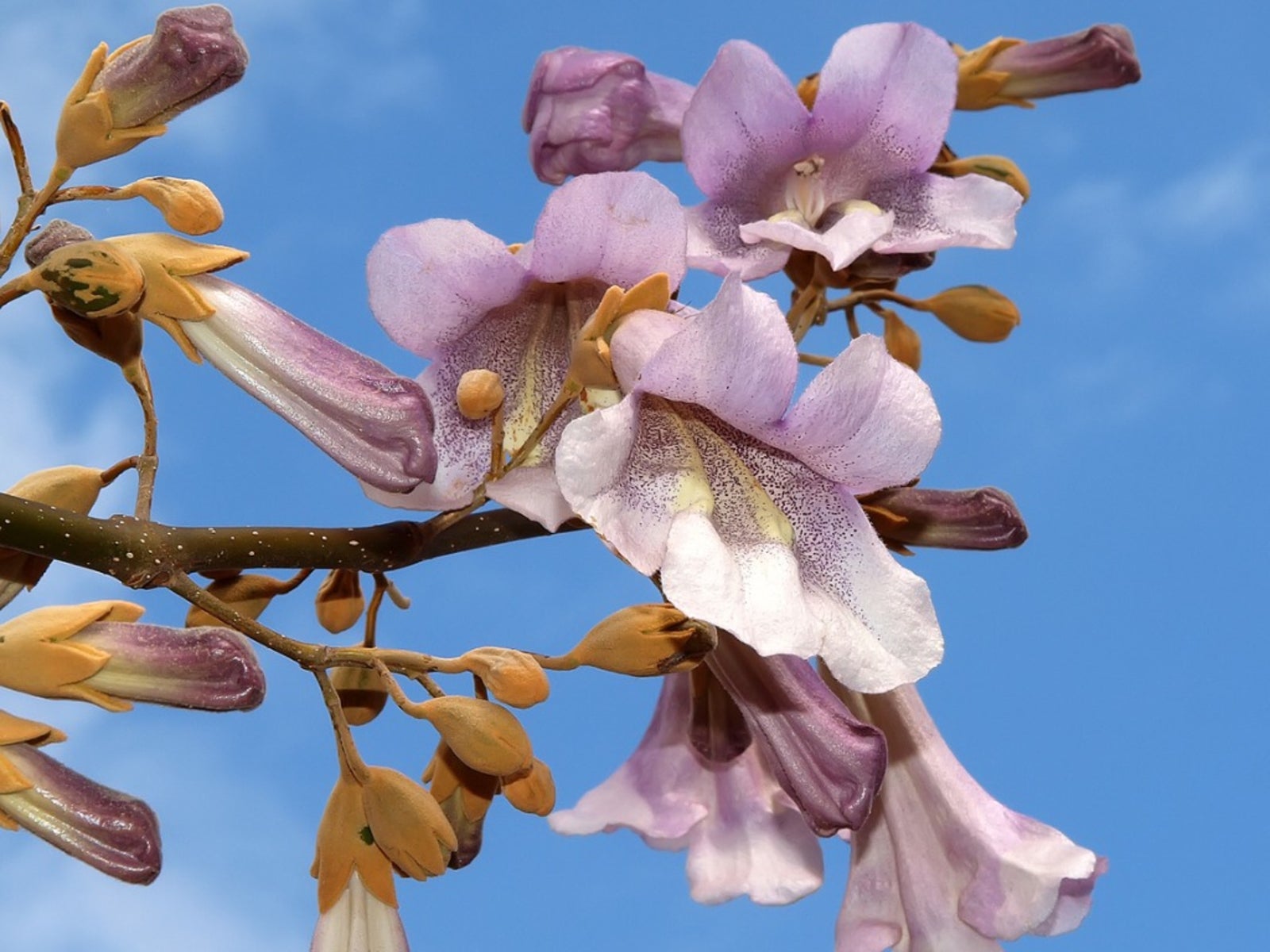Paulownia Seed Propagation: Tips On Growing Royal Empress From Seed


In springtime, Paulownia tormentosa is a dramatically beautiful tree. It bears velvety buds that develop into magnificent violet blossoms. The tree has many common names, including royal empress, and it is easy to propagate. If you are interested in growing royal empress from seed, as Mother Nature does, you’ll find that planting royal empress seeds is almost foolproof. Read on for more information about royal empress seed germination.
Paulownia Seed Propagation
Paulwnia tormentosa is a very attractive, fast-growing tree and easy to grow in a home garden in the right environment. It bears trumpet-like flowers which are large, lovely, and fragrant in shades of blue or lavender. After the flower show in spring, the royal empress’s huge leaves appear. They are beautiful, exceptionally soft, and downy. These are followed by a green fruit that matures into a brown capsule. The tree was introduced into the U.S. during the 1800's. Within a few decades, it naturalized across the eastern side of the country via Paulownia seed propagation. The tree’s fruit is a four-compartment capsule containing thousands of tiny winged seeds. A mature tree produces some 20 million seeds every year. Since the royal empress tree readily escapes cultivation, it is considered an invasive weed in some places. This raises the question: should you plant royal empress seeds at all? Only you can make that decision.
Growing Royal Empress from Seed
In the wild, seeds of royal empress trees are nature’s propagation method of choice. Royal empress seed germination is quite easy to achieve in most regions of the country. So, if you are growing royal empress from seed, you’ll have an easy time. Those sowing seeds of royal empress will need to remember that the seeds are tiny. That means that you’ll have to make an extra effort to sow them thinly to prevent crowded seedlings. One way to proceed with royal empress seed germination is to place them on a tray on top of compost. The seeds of royal empress require sunlight to germinate so don’t cover them with soil. Keep the soil moist for a month or two until you see that they are germinated. Covering the tray in plastic holds moisture in. Once the seeds germinate, remove the plastic. The young seedlings shoot up fast, growing to 6 feet (2 m.) in the first growing season. With any luck, you may go from royal empress seed germination to enjoying the showy flowers in as little as two years.
Planting Paulownia Trees
If you are wondering where to plant Paulownia, pick a sheltered location. It’s a good idea to shield royal empress from strong wings. The wood of this quick-growing tree isn’t very strong and limbs can split off in gales. On the other hand, royal empress trees don’t require any particular type of soil. Another good point is that they are drought tolerant.
Gardening tips, videos, info and more delivered right to your inbox!
Sign up for the Gardening Know How newsletter today and receive a free copy of our e-book "How to Grow Delicious Tomatoes".

Teo Spengler is a master gardener and a docent at the San Francisco Botanical Garden, where she hosts public tours. She has studied horticulture and written about nature, trees, plants, and gardening for more than two decades. Her extended family includes some 30 houseplants and hundreds of outdoor plants, including 250 trees, which are her main passion. Spengler currently splits her life between San Francisco and the French Basque Country, though she was raised in Alaska, giving her experience of gardening in a range of climates.
-
 Want The Longest Lasting Hydrangea Flowers? Grow These 8 Panicle Hydrangea Varieties
Want The Longest Lasting Hydrangea Flowers? Grow These 8 Panicle Hydrangea VarietiesFor ornamental shrubs that deliver the longest flowering seasons with plush blooms and delicate hues, these panicle hydrangea varieties are essential in your yard
By Tonya Barnett
-
 Moody Blooms For Spring: 8 Types Of Black Flowers To Add Drama To Spring Displays
Moody Blooms For Spring: 8 Types Of Black Flowers To Add Drama To Spring DisplaysFrom midnight burgundies to inky violets, several types of black flowers can enrich and embolden a spring display. Try these brooding bloomers for a moody garden
By Tonya Barnett
-
 Controlling Paulownia – Tips On Getting Rid Of Royal Empress Trees
Controlling Paulownia – Tips On Getting Rid Of Royal Empress TreesA royal pain in the rump is the Royal Empress tree, also known as Princess tree or Royal Paulownia. While getting rid of this extremely fast-growing tree may seem like a never-ending battle, click here to learn more about royal empress control.
By Shelley Pierce
-
 Pruning An Empress Tree – Learn About Royal Paulownia Empress Pruning
Pruning An Empress Tree – Learn About Royal Paulownia Empress PruningRoyal empress trees grow fast so you need to start pruning royal empress trees early to help them develop a strong branch structure. If you want to know how to prune a paulownia and when to prune these trees, the following article will help.
By Teo Spengler
-
 Royal Empress Tree: World's Fastest Growing Shade Tree
Royal Empress Tree: World's Fastest Growing Shade TreeInstant shade usually comes at a price. Normally, you'd have one of more disadvantages from trees that grow super fast. Here you can learn about growing a Royal Empress tree and its benefits.
By Sandra O'Hare